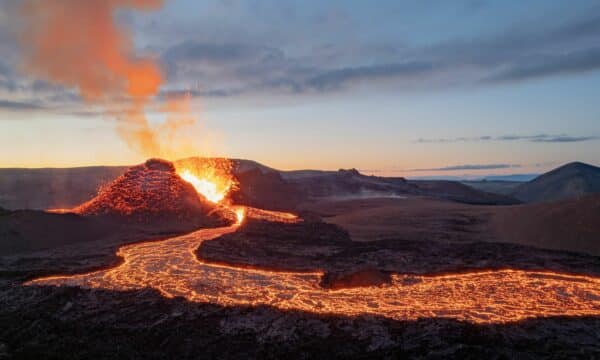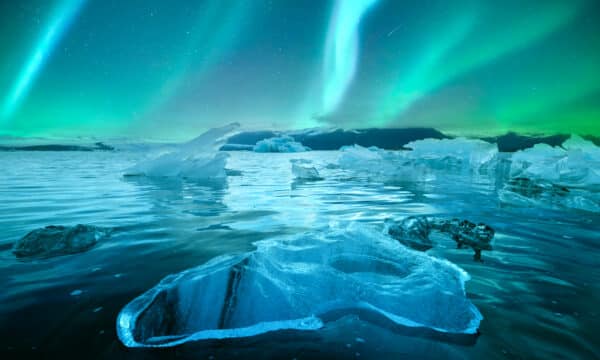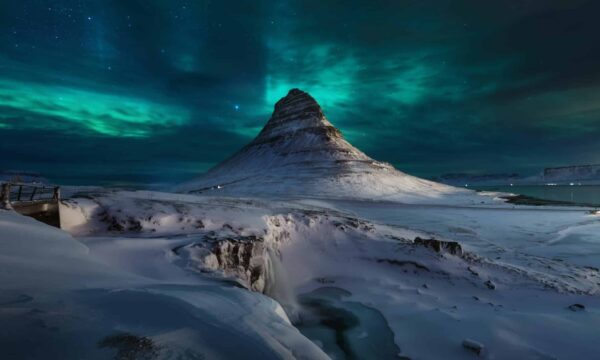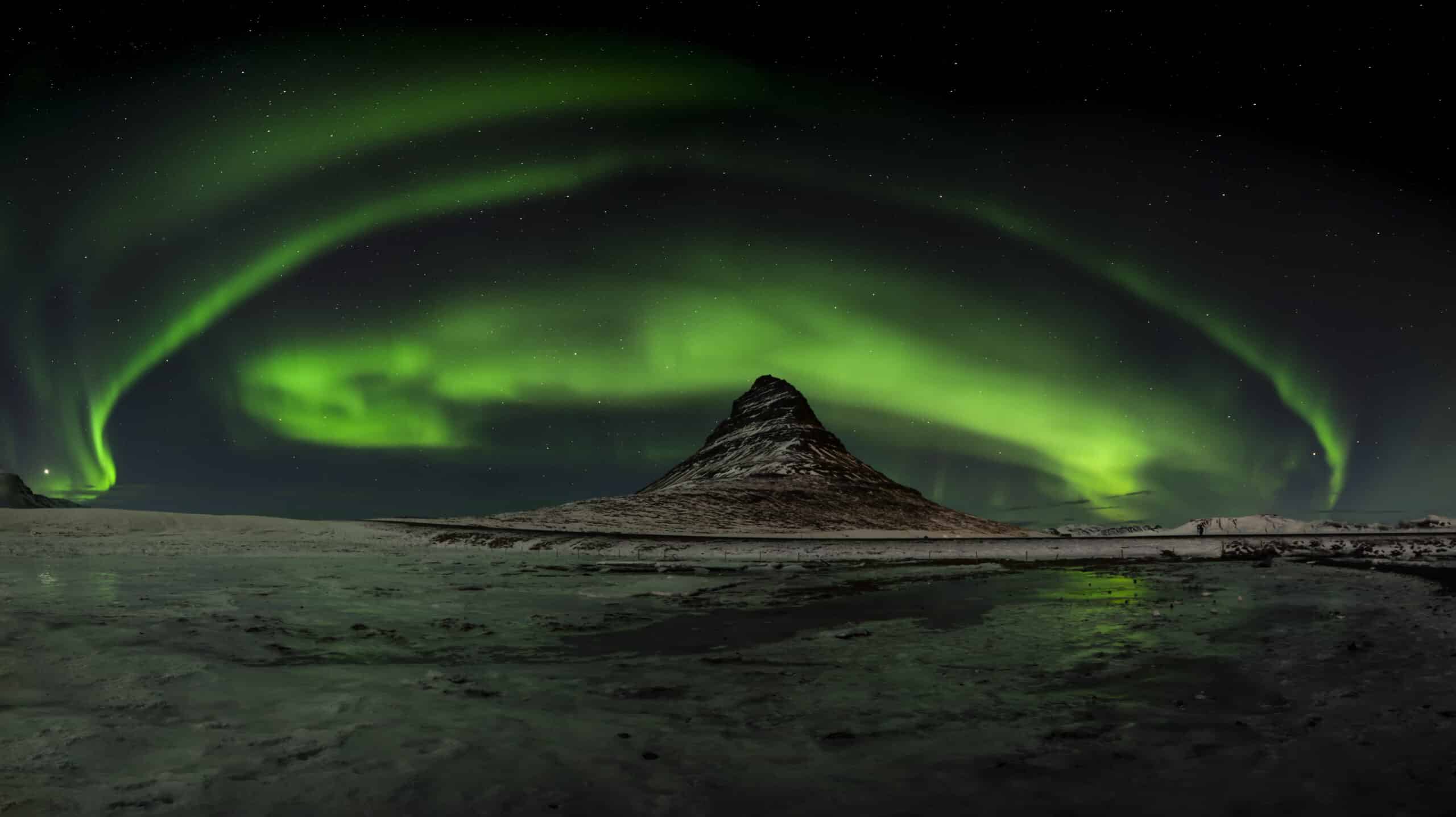
February in Iceland is known to be cold, dark, and windy. It’s not exactly what many people picture when they think of their dream vacation, which is why the summer months tend to be more popular. However, for those who dream of solitude and adventure, February is the perfect month.
Because it’s one of the least popular months for visitors in Iceland, there are fewer crowds around. Making it a great time for those looking to experience the beauty of places such as the Golden Circle or Jökulsárlón Glacier Lagoon uncrowded.
Average temperatures in February are around freezing, creating perfect conditions for the glittering blue ice caves in Vatnajökull National Park. February also sees few daylight hours, allowing for more opportunities to view the Northern Lights. And the wind? Strong winds help clear the sky of clouds for even better aurora viewing conditions.
So February is actually a great time to visit Iceland for Ice Caves, the Northern Lights, and fewer crowds. However, it’s important for visitors to have a sense of adventure and be flexible with their plans. The winter weather can be unpredictable, but the rewards are magical.
February Weather in Iceland
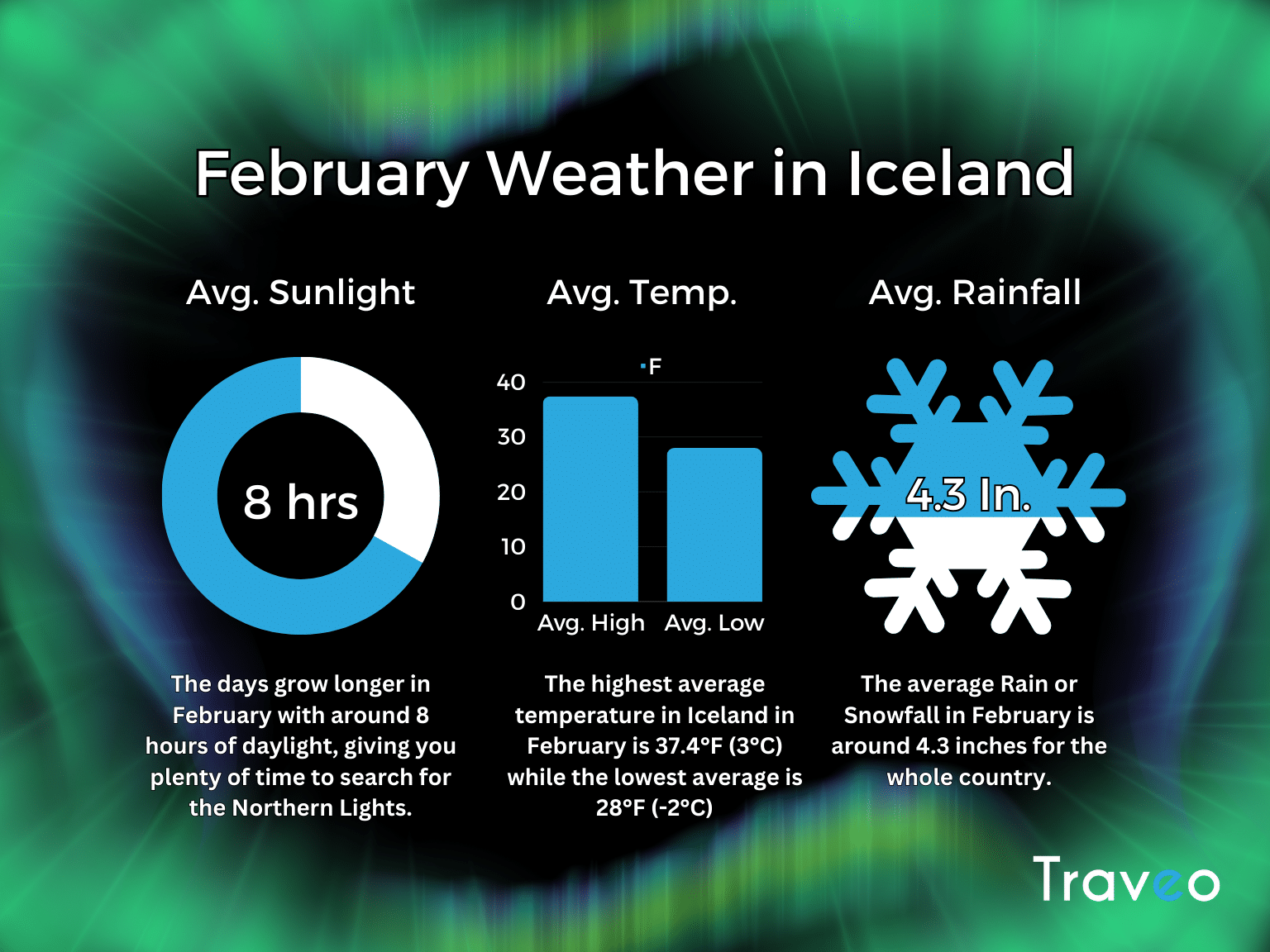
February is in the middle of Iceland’s winter season, which means few hours of daylight and cold temperatures. However, we keep getting closer to spring, meaning that the days are longer than in December and January, and the further we get into the month, the temperature starts rising.
At the beginning of the month, the average daylight hours are around 7, with the sun rising at around 10 AM and setting around 5 PM. Towards the end of the month, the hours of daylight increase to around 10.
The average temperatures in Iceland in February range between 28°F (-2°C) and 37.4°F (3°C), and the average precipitation is about 4.3 inches. Since the temperature fluctuates between above and below freezing, the precipitation can come in the form of rain, snow, or sleet.
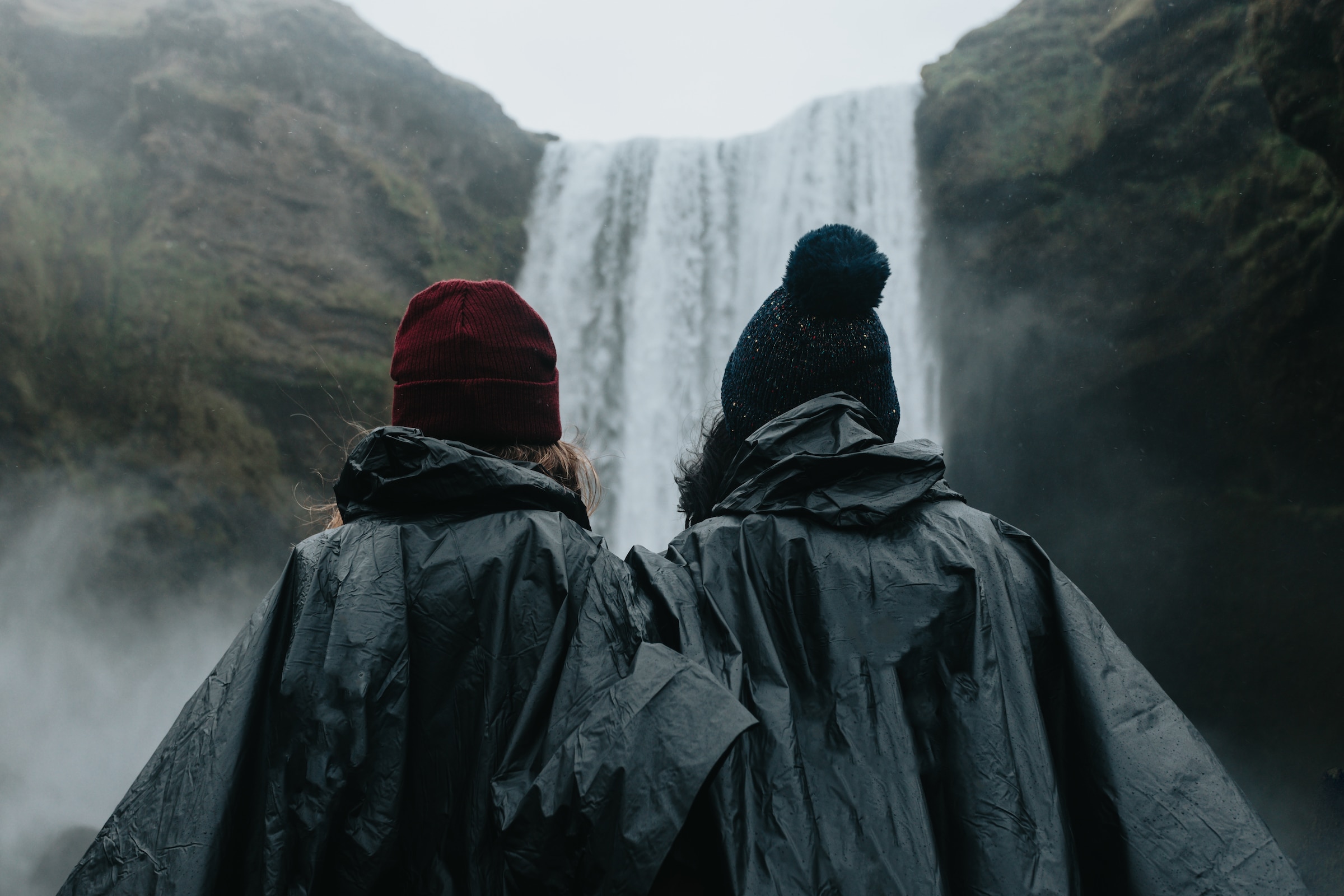
In February, the cold temperatures in Iceland are made even chillier by strong winds, which usually reach around 15km/h. However, these winds have a positive effect on the weather as they clear the skies of clouds, creating excellent conditions for Northern Lights hunting.
When visiting in February, it is important to keep an eye on the weather forecast each day and keep an open mind. The weather can change quickly, and your plans may have to be altered accordingly. If you book with Traveo, your personal travel advisor will help you rearrange your itinerary to make sure you maximize your time in Iceland fully.
Tips for Traveling to Iceland in February
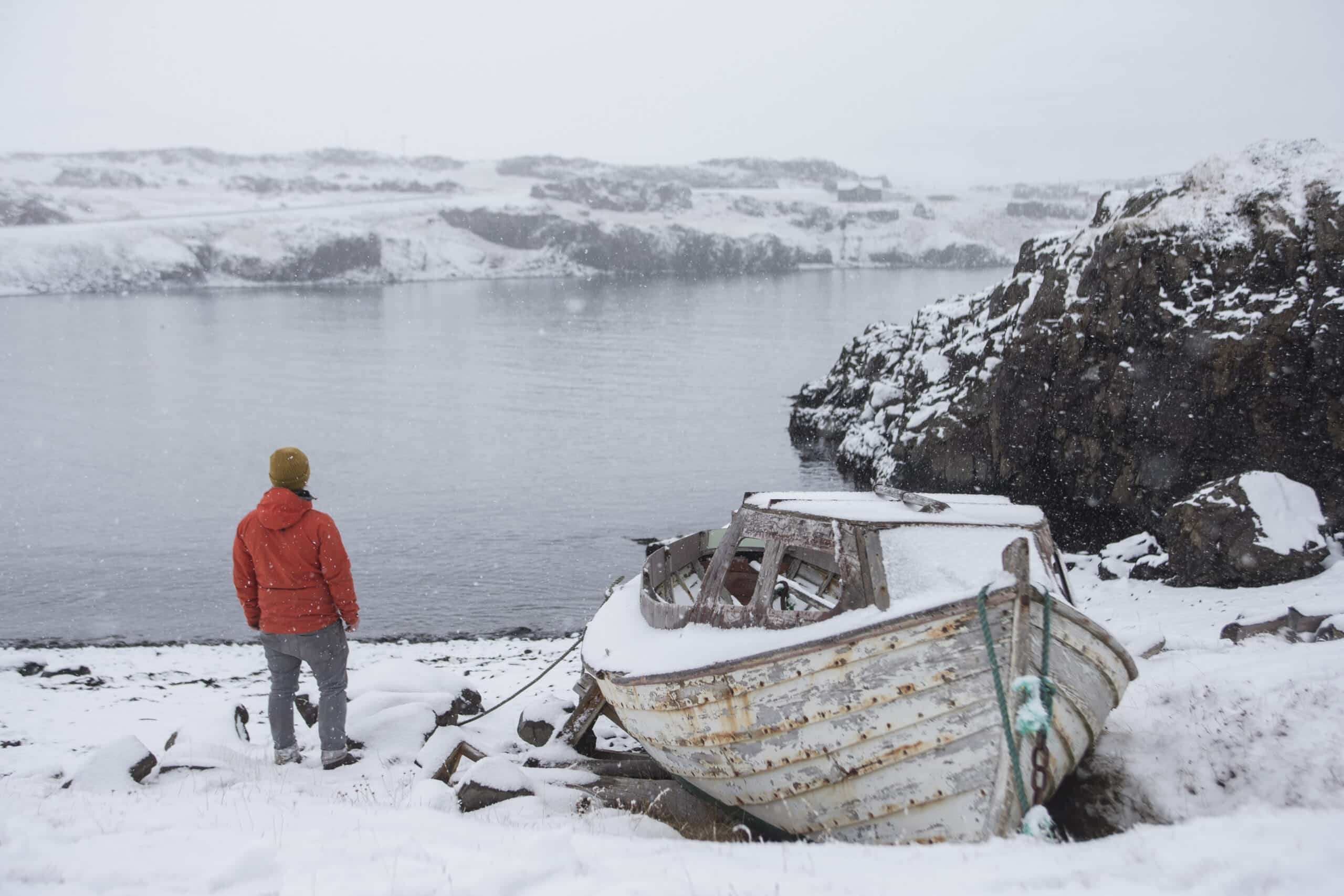
Traveling to Iceland always requires some preparation, no matter what time you visit. But there are a few things you should keep in mind when visiting Iceland during the winter season. Here are some tips to make your trip enjoyable and safe:
What to wear in Iceland in February
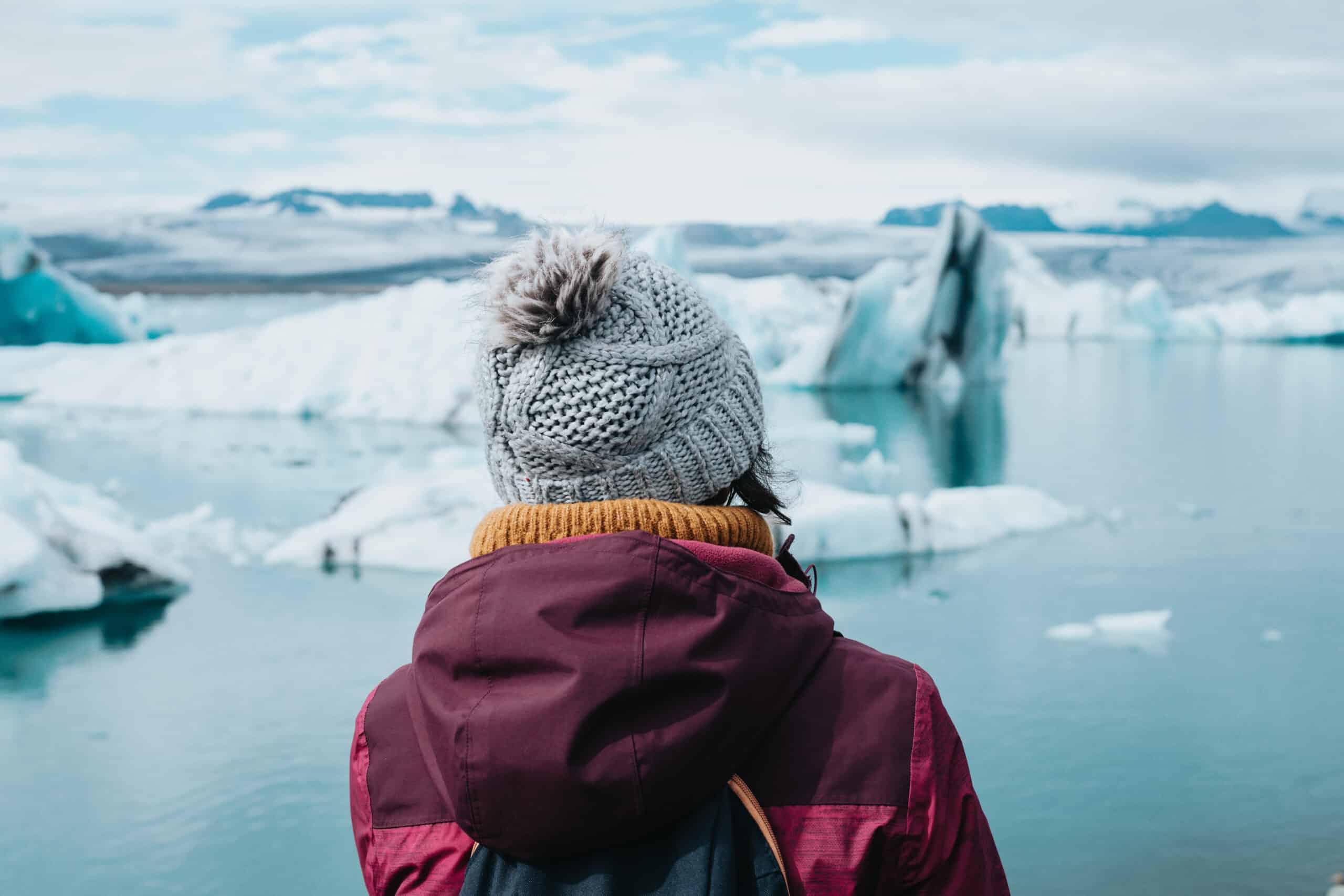
Cold weather and windy conditions mean that you have to bring some warm clothes if you want to venture out of your hotel room during your vacation.
On a winter trip in Iceland, layering is key. That way, you can easily adjust your clothes depending on the temperature outside or when transitioning from a warm vehicle to the cold outside.
Here’s a list of what you should pack:
- Water and windproof jacket that is also warm
- Insulated pants or waterproof trousers
- Wool or fleece sweaters for layering
- Thermal underwear
- Hat, scarf, and gloves
- Good thick socks (and lots of them)
- Good, waterproof boots with a grip sole (If you want to join a glacier hiking or an ice-caving tour, the boots need to cover your ankles)
The Best Way to Get Around Iceland in February
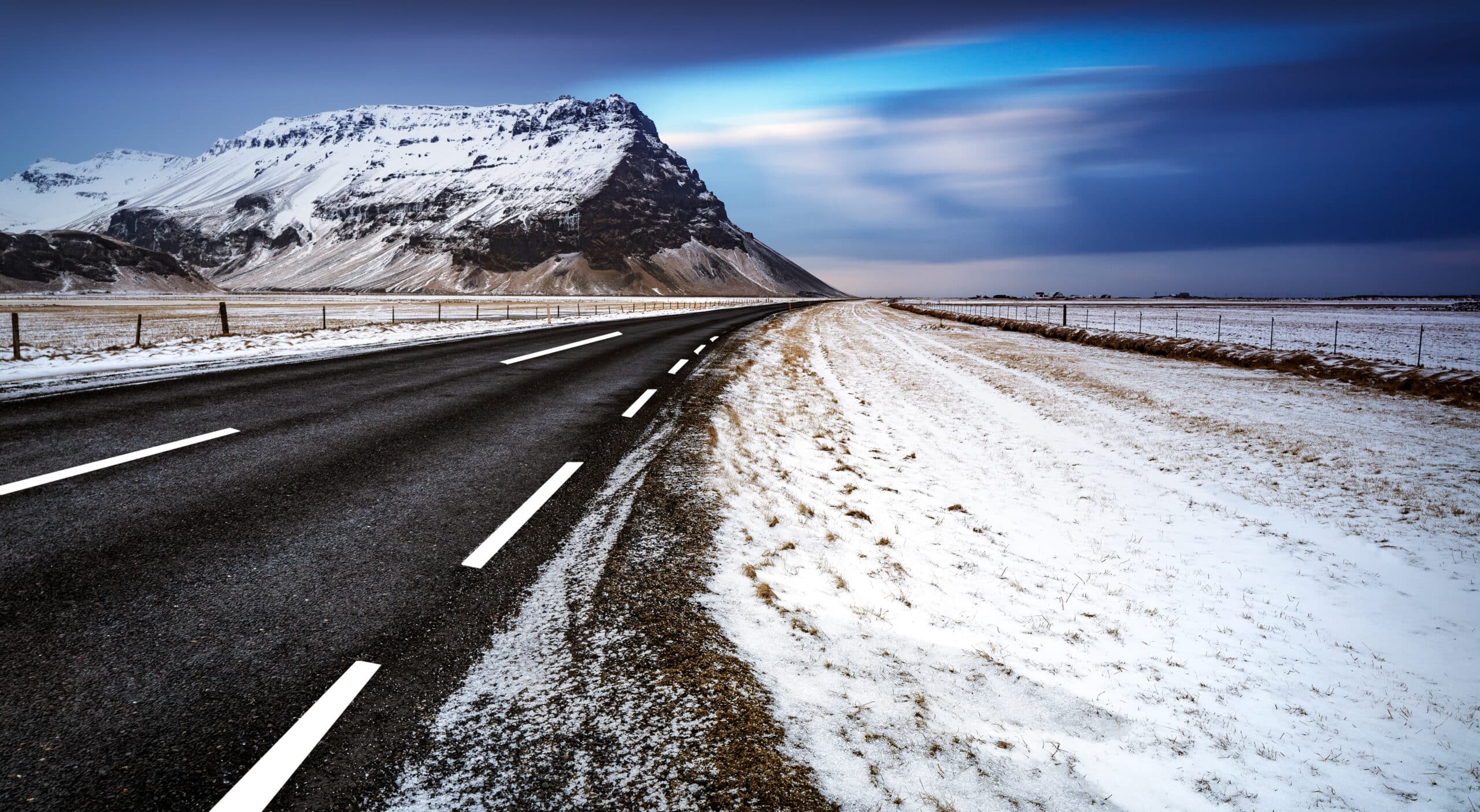
Getting around Iceland in February requires careful consideration of winter conditions. You should choose a mode of transportation that aligns with your preferences, budget, and comfort level. And remember, be flexible with your plans in case of unforeseen winter challenges.
Road conditions can often be challenging in February, which is why we recommend guided tours, especially when doing longer trips such as circle tours. On a small-group guided tour, you’ll travel around the country with an informative local guide. They’ll be on hand with different routes and activities in case of unpredictable winter conditions.
Small-group tours are also fantastic for those who’d like to experience the country in a small and intimate setting. However, if you are looking for a bit more privacy and a lot more luxury, you could opt for a privately guided tour. The itinerary on these tours is more flexible, allowing you to, for example, sleep in or stay out longer than you would be able to on group tours.
If, however, you feel comfortable with winter driving, you could opt for a self-drive tour. We recommend sticking to West and South Iceland if you plan to drive yourself, as those roads tend to get less snowy than those in East and North Iceland.
How to Drive in Iceland in the Winter Time
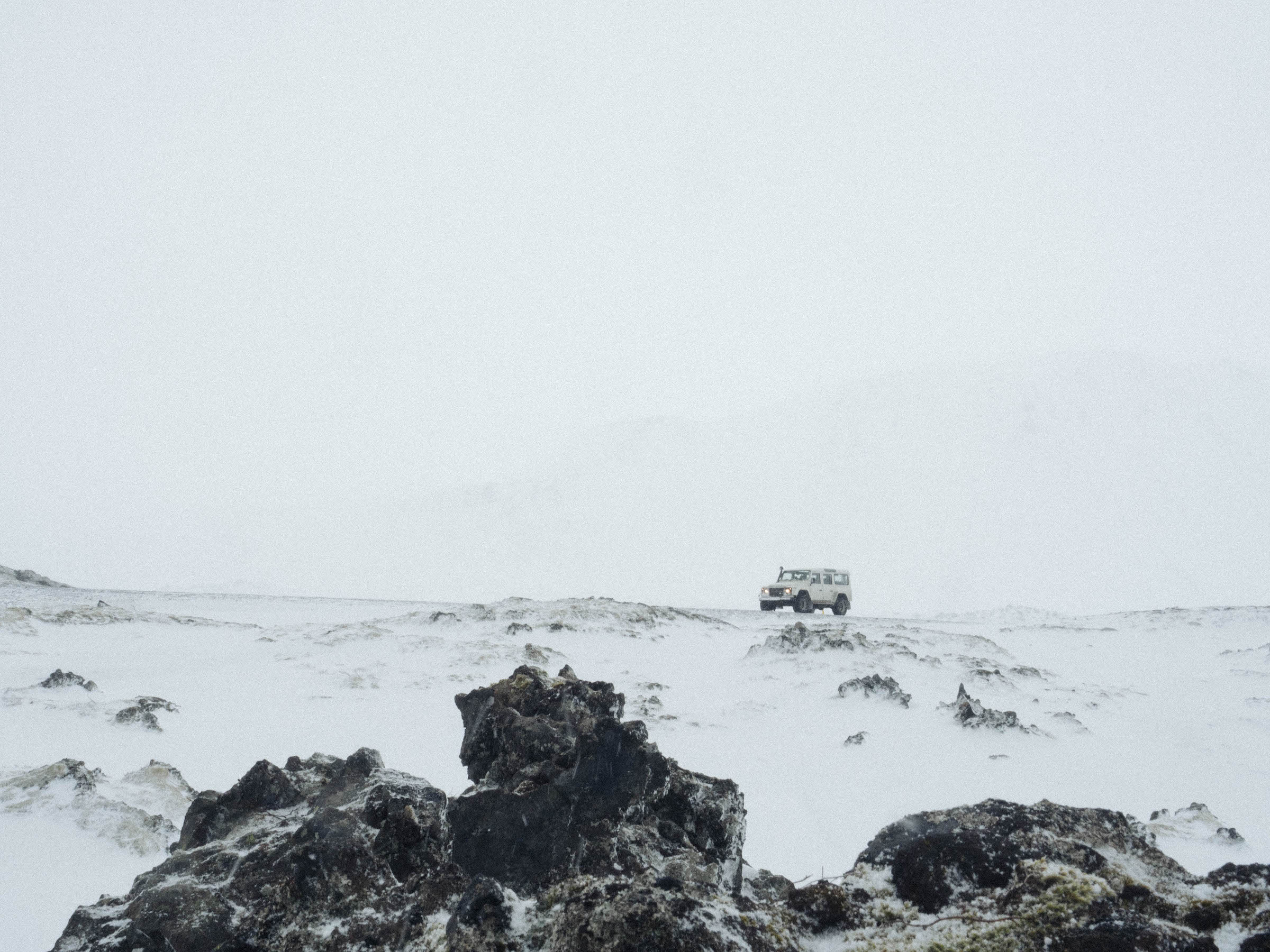
If you’re looking to do a road trip around Iceland during the winter time, you have to be prepared for some winter driving. Keep in mind that Icelandic winter conditions might not be anything like the ones you are used to. Aside from snowy roads, expect sharp winds, icy streets, and little daylight.
Below are some tips on driving in Iceland in winter:
- Rent a Suitable Vehicle:
- Choose a 4WD or AWD (all-wheel-drive) vehicle, especially if you plan to explore areas outside major cities. These vehicles provide better traction on icy and snowy roads. Every rental car in Iceland comes equipped with winter tires.
- Check Weather and Road Conditions:
- Monitor weather forecasts and road conditions regularly, especially if planning a long journey. The Icelandic Road and Coastal Administration (IRCA) provides real-time road information.
- Drive Cautiously:
- Reduce your speed and drive at a pace that suits the road conditions. Icy roads can be treacherous, so leave plenty of space between your vehicle and others. Take extra care on bridges and overpasses.
- Stay on Main Roads:
- Stick to well-maintained main roads, particularly in rural and remote areas. Secondary roads may not be plowed or adequately maintained.
- Daylight Hours:
- Be aware of the limited daylight hours in winter. Plan your travel during daylight, and if you must drive in the dark, ensure your vehicle’s headlights are working properly.
- Inform Someone of Your Plans:
- Inform someone about your travel plans, including your route and estimated arrival time. In case of an emergency, this information can be crucial for assistance.
If you’re up for the challenge of driving around Iceland’s winter terrains, you’ll be rewarded with more freedom and flexibility than on guided tours. Aside from setting your own schedule, you’ll be able to hop into your car each night and drive away from the bright city lights to search for the beautiful auroras.
Best Things to Do In February
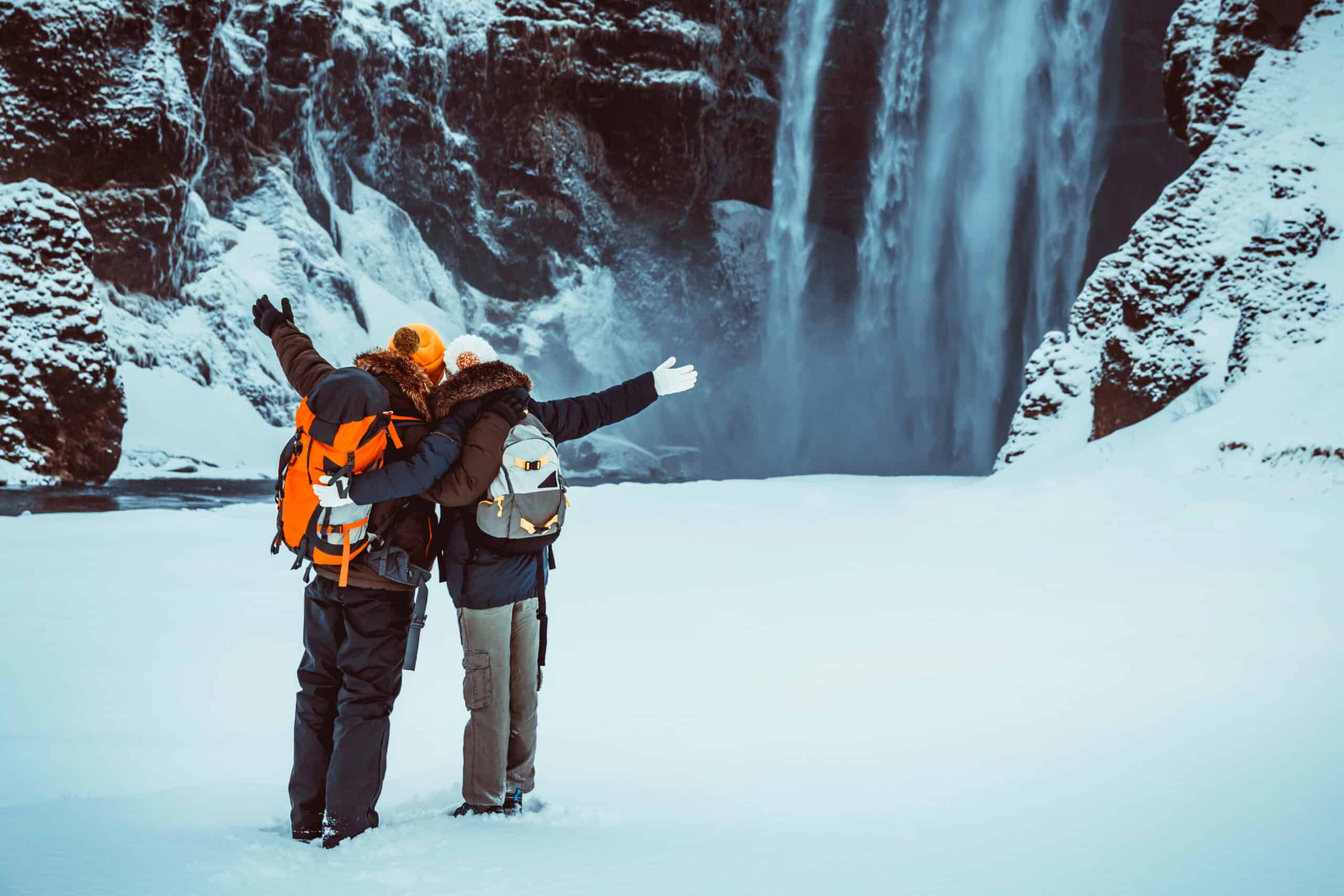
Visiting Iceland in February is definitely only for adventurous people with a flexible mindset. With unpredictable weather, plans can easily change without much notice. With that being said, it doesn’t mean that you can’t have some sort of plan when visiting.
So, what should you do if you decide to visit during this cold winter month? Below is a list of the best things to do with some alternatives in case your plans need to be changed.
Northern Lights Hunting
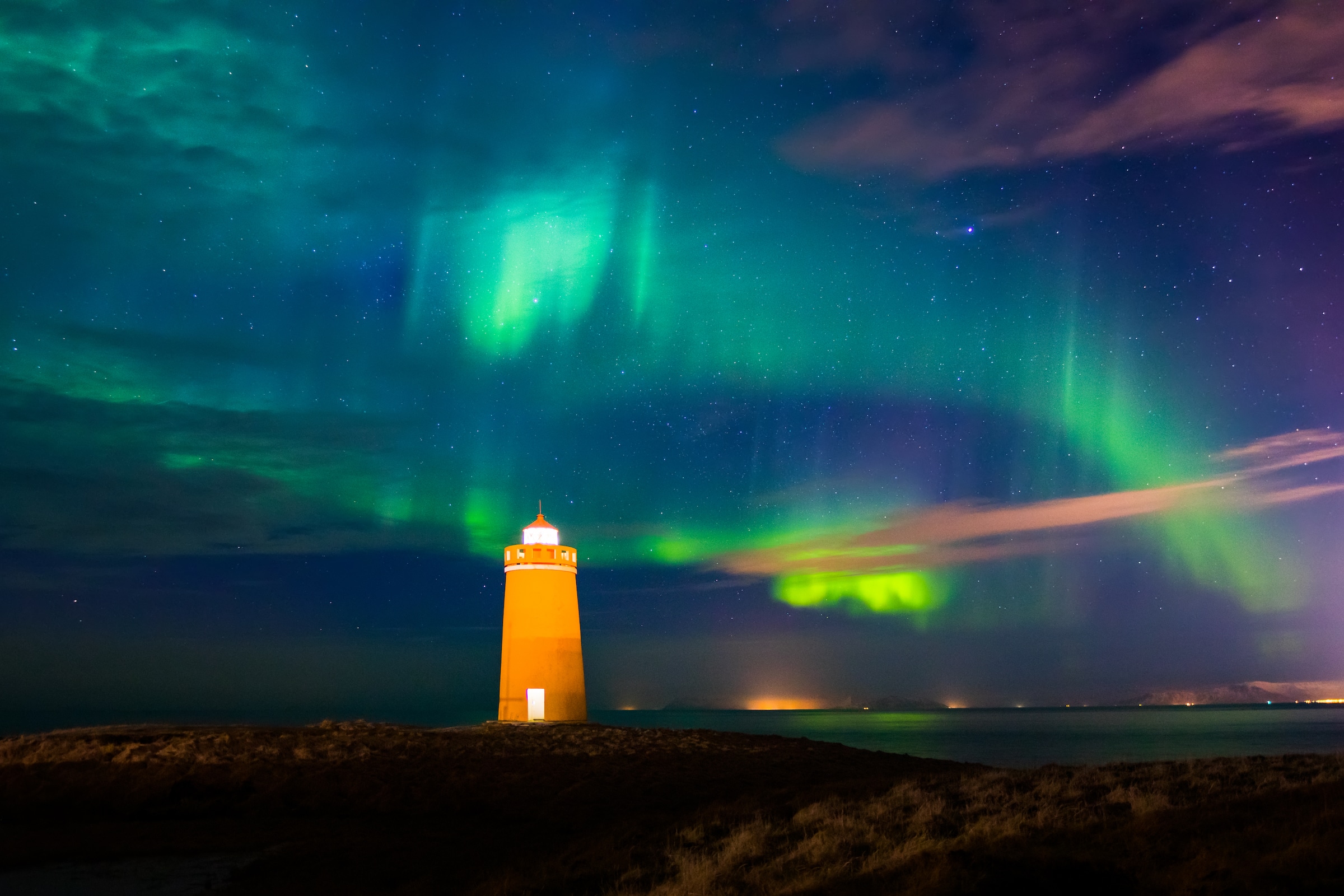
Since the country experiences so much darkness during the winter months, hunting for the Northern Lights becomes the ultimate winter activity.
Seeing these dancing lights requires dark skies that are clear of clouds. If you’re lucky, you can sometimes spot them walking around Reykjavík City. However, if you want to maximize your chances, you need to get away from any light pollution.
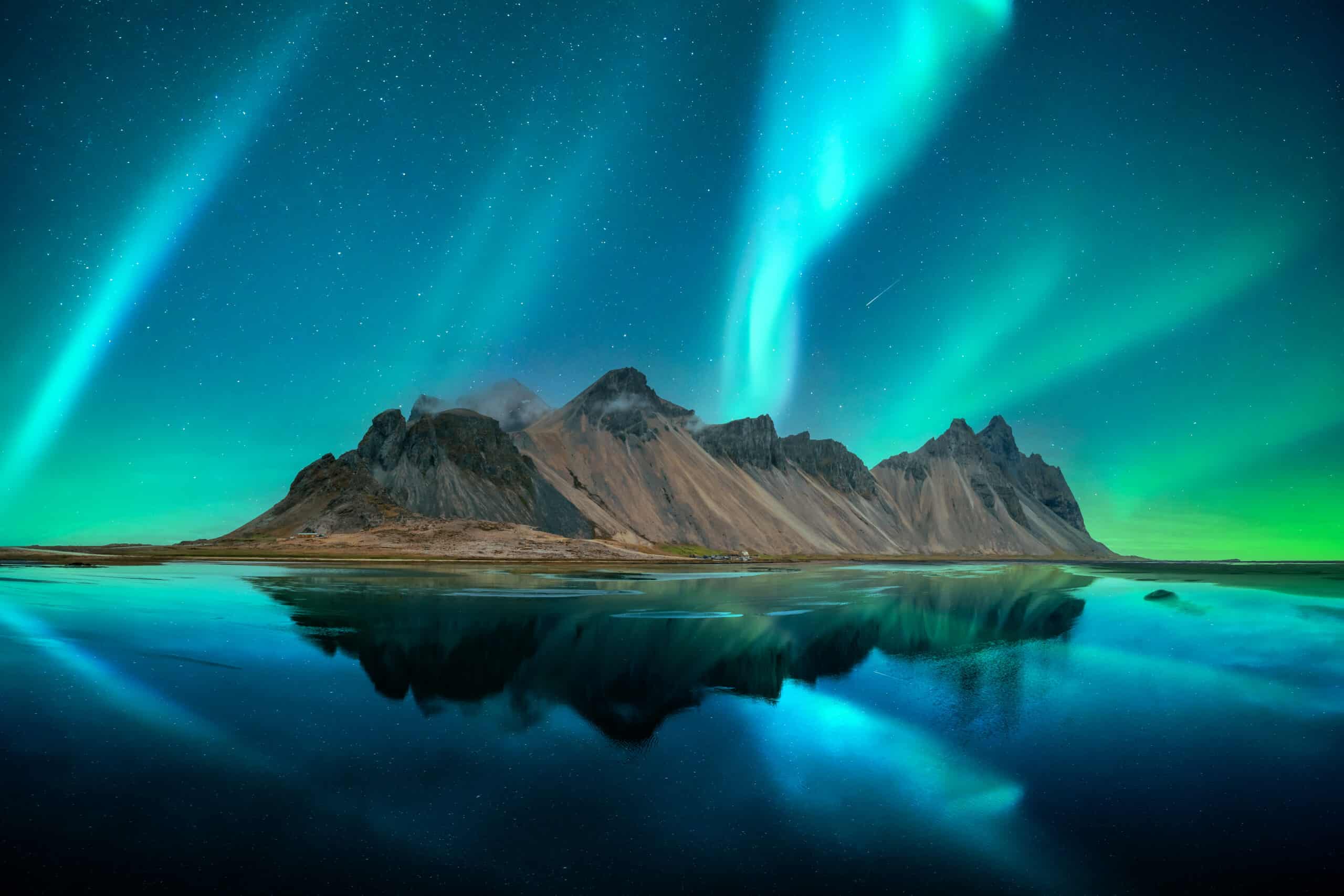
Northern Lights Tours are a convenient way to spot the stunning auroras. A professional guide pays close attention to weather conditions, monitoring solar activity and noticing where there is the least cloud coverage. They’ll then take you out into the dark countryside to spot this beautiful natural phenomenon.
If the weather conditions are not suitable, the guides will cancel the tour, and you can try again another night. That is why you should book your aurora hunting tour early on your Icelandic trip.
If you’ve reached the end of your vacation and you haven’t seen any dancing lights, you can visit the Northern Lights Planetarium at Perlan Museum. Take some photos there; no one will know you didn’t see the real thing.
Blue Lagoon
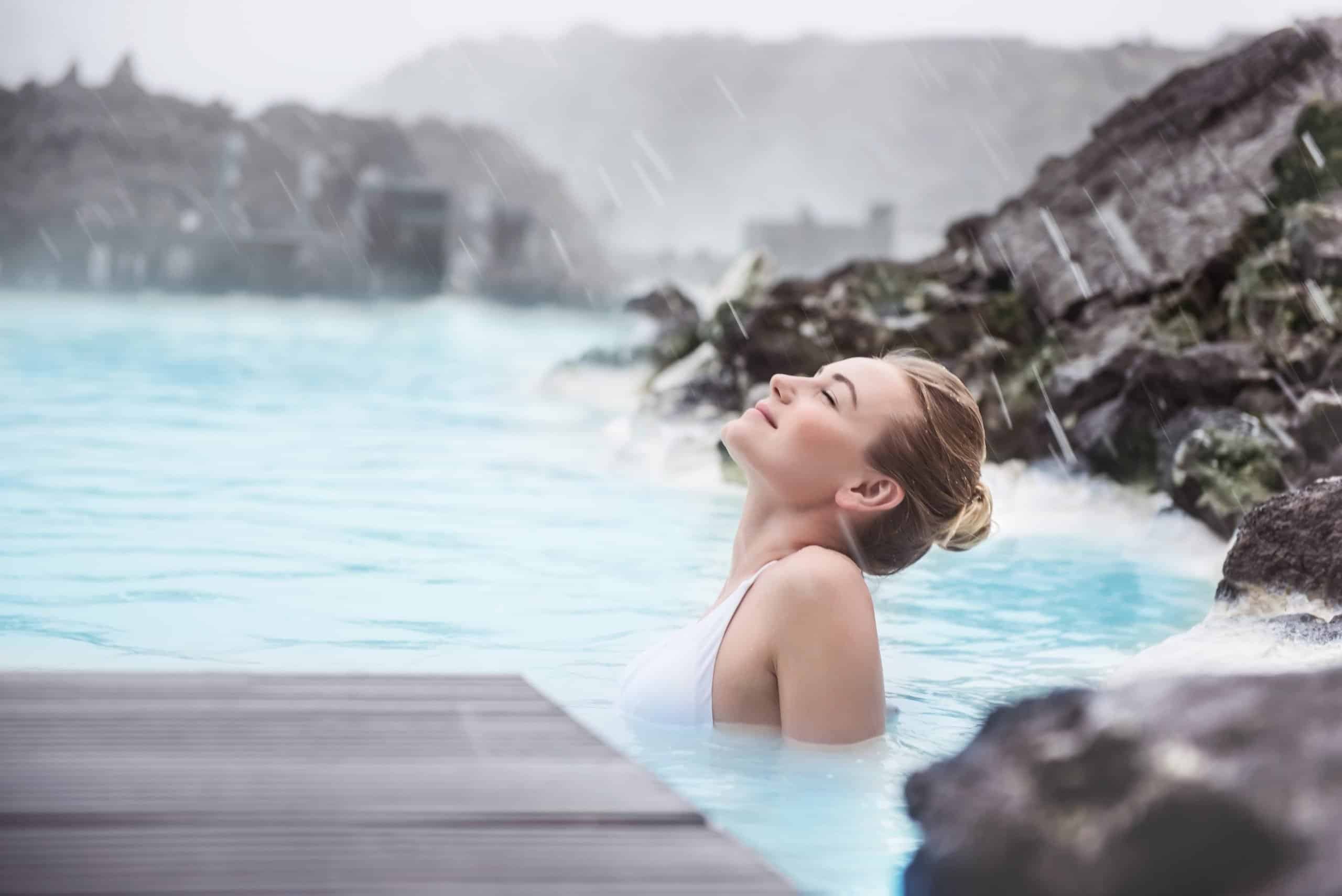
How do you stay warm during one of the coldest months of the year? You take a dip in warm, geothermal waters, of course!
Personally, I prefer visiting hot springs and spas, such as the Blue Lagoon, Sky Lagoon, or Hvammsvík Nature Baths, when it is really cold outside. There is something so refreshing about the contrast between the warm water and cold air that feels both relaxing and invigorating.
Lagoons and hot springs can be found around the country, and if the weather or road closures are preventing you from visiting one, there will undoubtedly be another one closer to you that is just as luxurious.
Visit The Blue Ice Caves
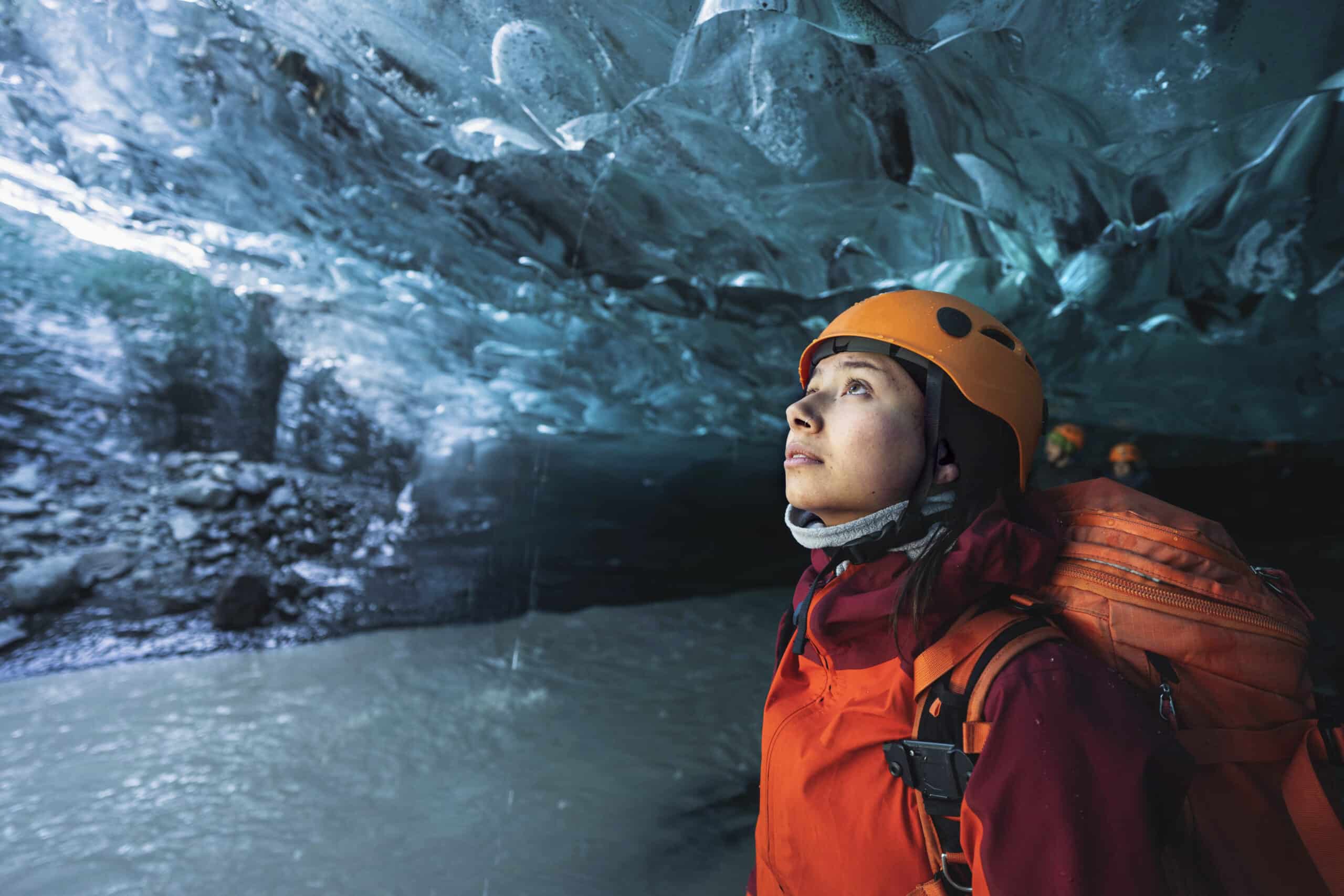
Northern Lights hunting might be the number one winter activity in Iceland, but ice caving is definitely number two.
February might be one of the coldest months of the year, but that only creates perfect conditions for ice caves. These frozen caverns need frost and ice as they flood with glacier meltwater in the spring.
To visit an ice cave, you’ll need a guided tour. Trained glacier guide scout the area every morning, making sure it is safe for visitors. When you arrive for your tour, they’ll provide you with crampons and a helmet before you enter the glistening cavern.
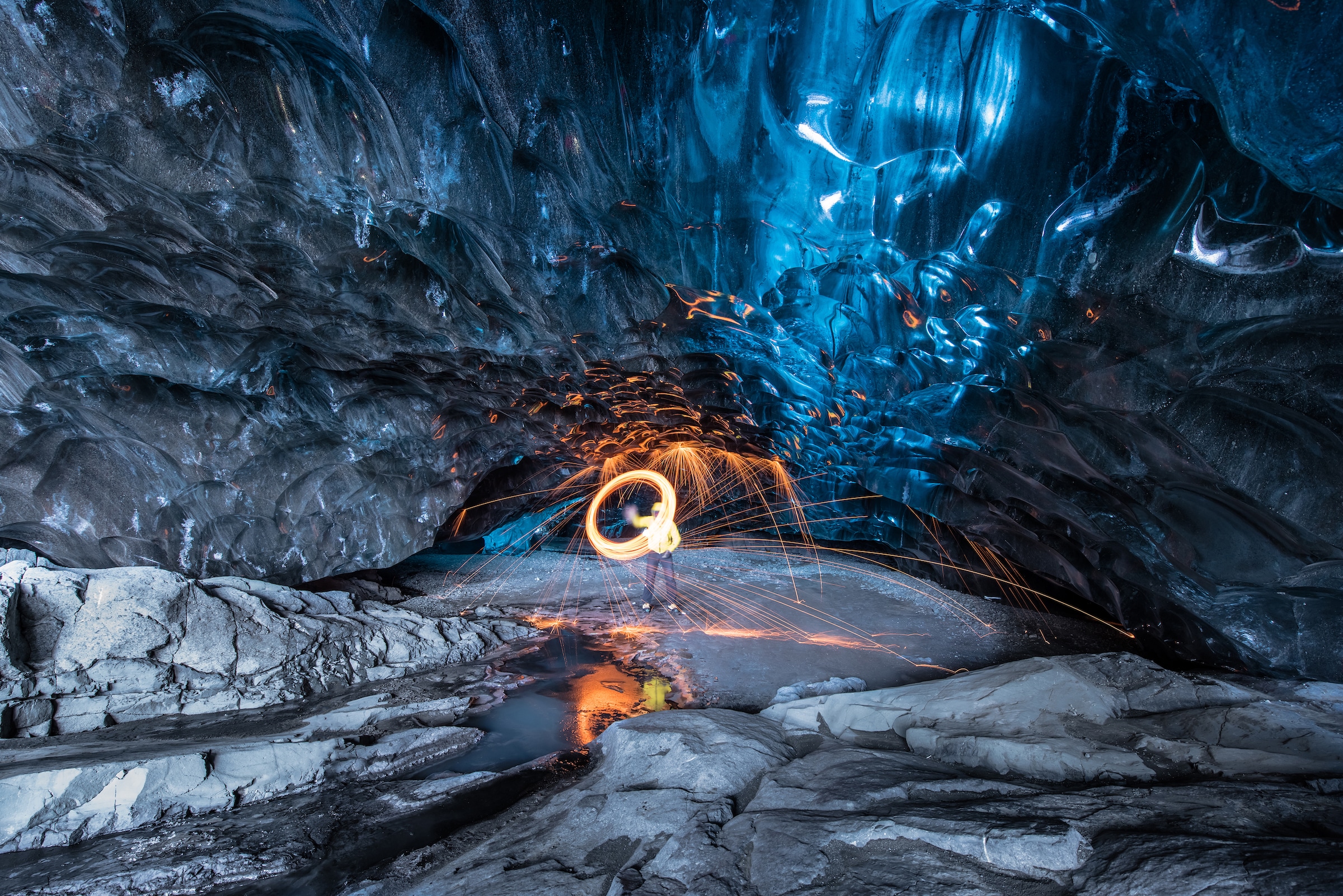
The Blue Ice Caves are located in Vatnajökull National Park in southeast Iceland, 231 mi (372 km) from the capital Reykjavík. If the weather in Iceland is acting up and reaching this far corner of the country proves impossible, you still have some options.
The first one is the Katla Ice Cave in South Iceland. The meeting point for tours to this cave is slightly closer at 115 mi (186 km). If that proves to be too far away, you can visit the Ice Cave Exhibition at Perlan Museum in Reykjavík or a cool lava cave such as Raufarhólshellir or Víðgelmir.
Winter Lights Festivals
Icelandic winters are pretty dark. To combat this, Icelanders tend to put up their Christmas lights pretty early and keep them up long into January. However, as February approaches, the cheer from the decorations seems to wear off. Enter The Winter Lights Festival in Reykjavík.
The Winter Lights Festival is an annual event that takes place at the beginning of February all around Iceland’s capital region. It is divided into three main components: Museum Night, with free entry into numerous museums; Pool Night, where the swimming pools are open later and access is free; and Light Art, a series of light installations creating a cozy atmosphere around the city.
Photographing Iceland in February
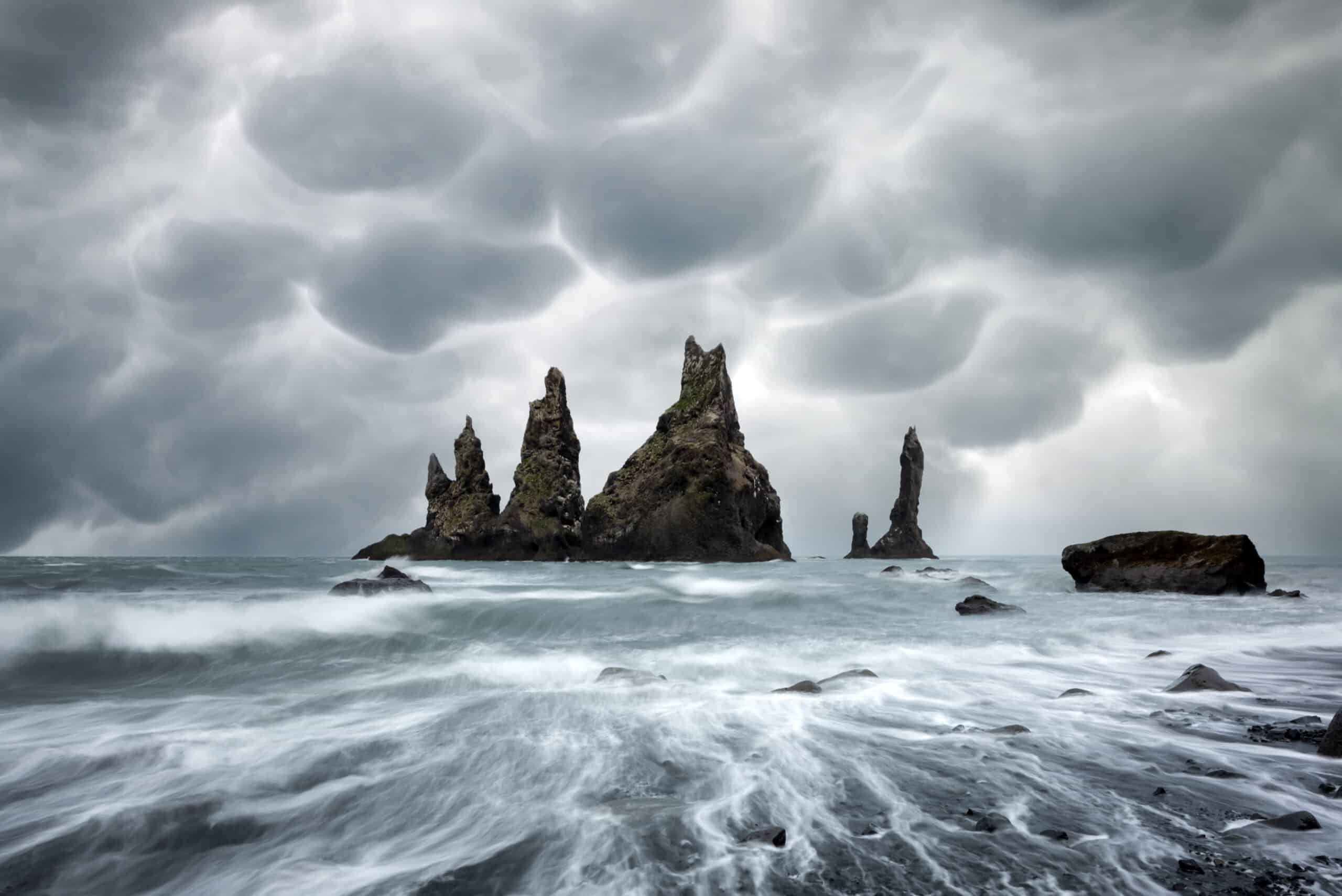
February weather is unpredictable, so for those with a creative eye, it is the perfect time to photograph Icelandic nature. One day, you might see frozen waterfalls and black sand beaches covered with a blanket of snow. The next day, rain could come and wash all the ice away, leaving black, bare landscapes that are perfect for moody, atmospheric photos.
February also gives you a chance to photograph some unique winter phenomena, such as glittering ice caves and, of course, the dancing Northern Lights.
Visit Museums & Exhibitions
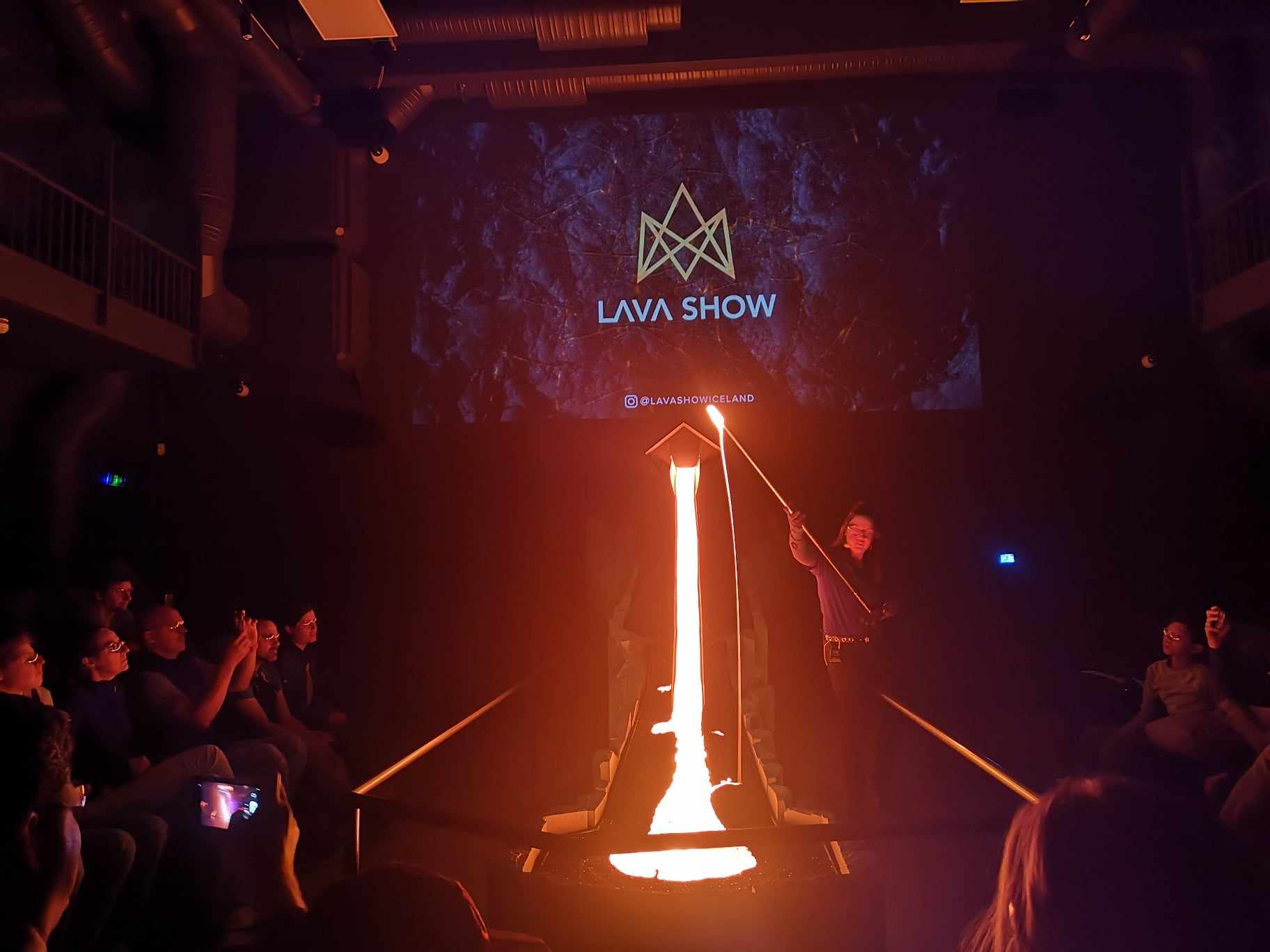
As mentioned, the weather in February isn’t always amazing. So, what should you do in case of a snowstorm or simply when you just don’t feel like staring at spectacular waterfalls in icy weather? Then you go inside!
Reykjavík has some amazing museums and exhibitions. These include the aforementioned Perlan Museum, The National Museum of Iceland, the Whales of Iceland exhibition, the Lava Show, and the (in)famous Phallological Museum.
Iceland Itinerary for February – Best Places to See
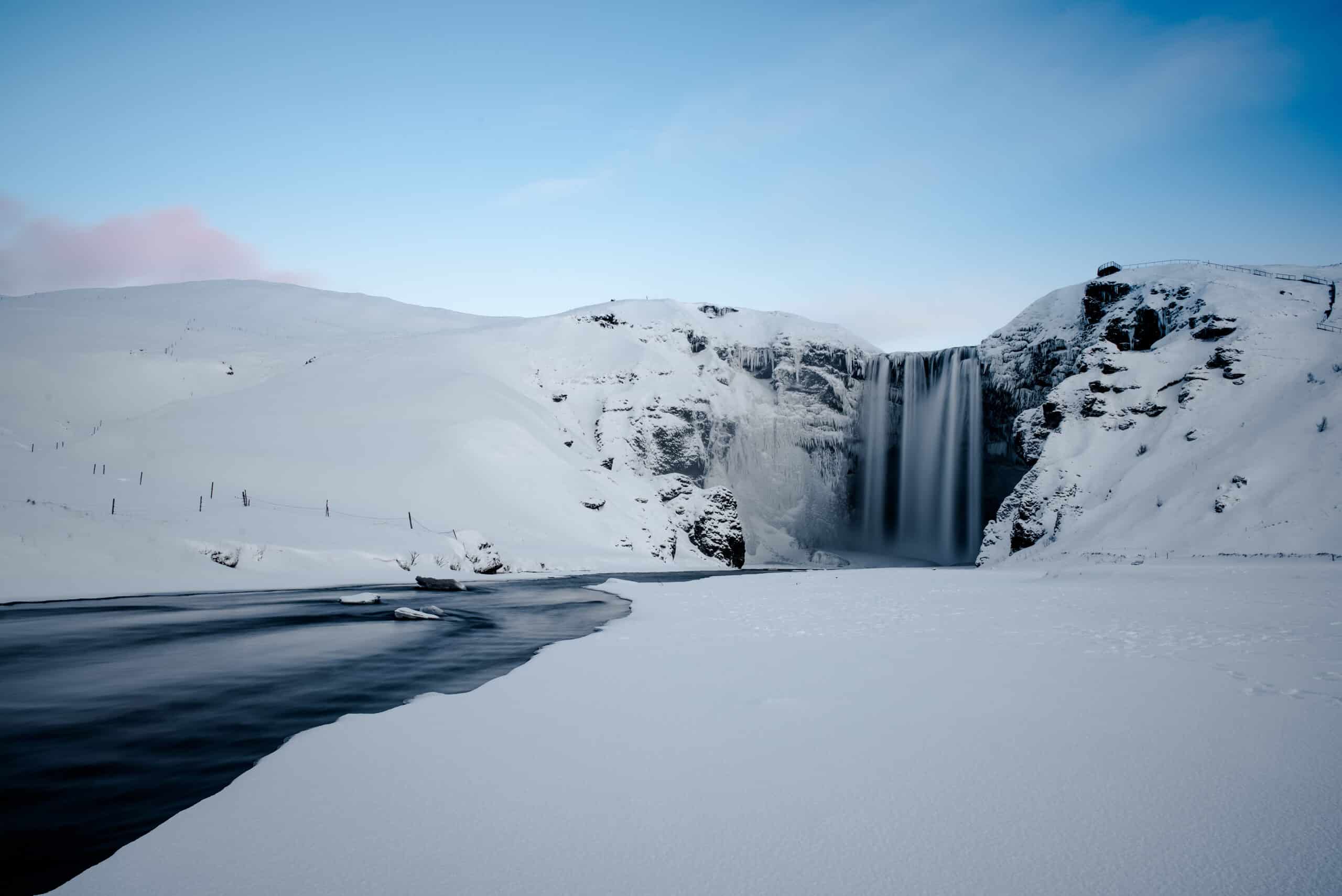
How many days you should spend in Iceland in February does, of course, depend on what you want to see and do. However, there are certain aspects you should take into consideration when planning your Icelandic vacation during the winter months.
Unpredictable weather doesn’t just mean that you should expect both rain and snow. It also means that there might be road closures, which can affect your travel plans. This is why I recommend staying at least five days when visiting in the winter.
For those looking to see the highlights of Iceland, five days will allow you to visit West and South Iceland’s most popular spots (that are less crowded in February). If, however, you’re looking to explore more, like on a circle trip, allocate at least ten days.
So, what should you see and do on your trip to Iceland in February? Below is a suggested itinerary for a 7-day trip of South and West Iceland.
Blue Lagoon
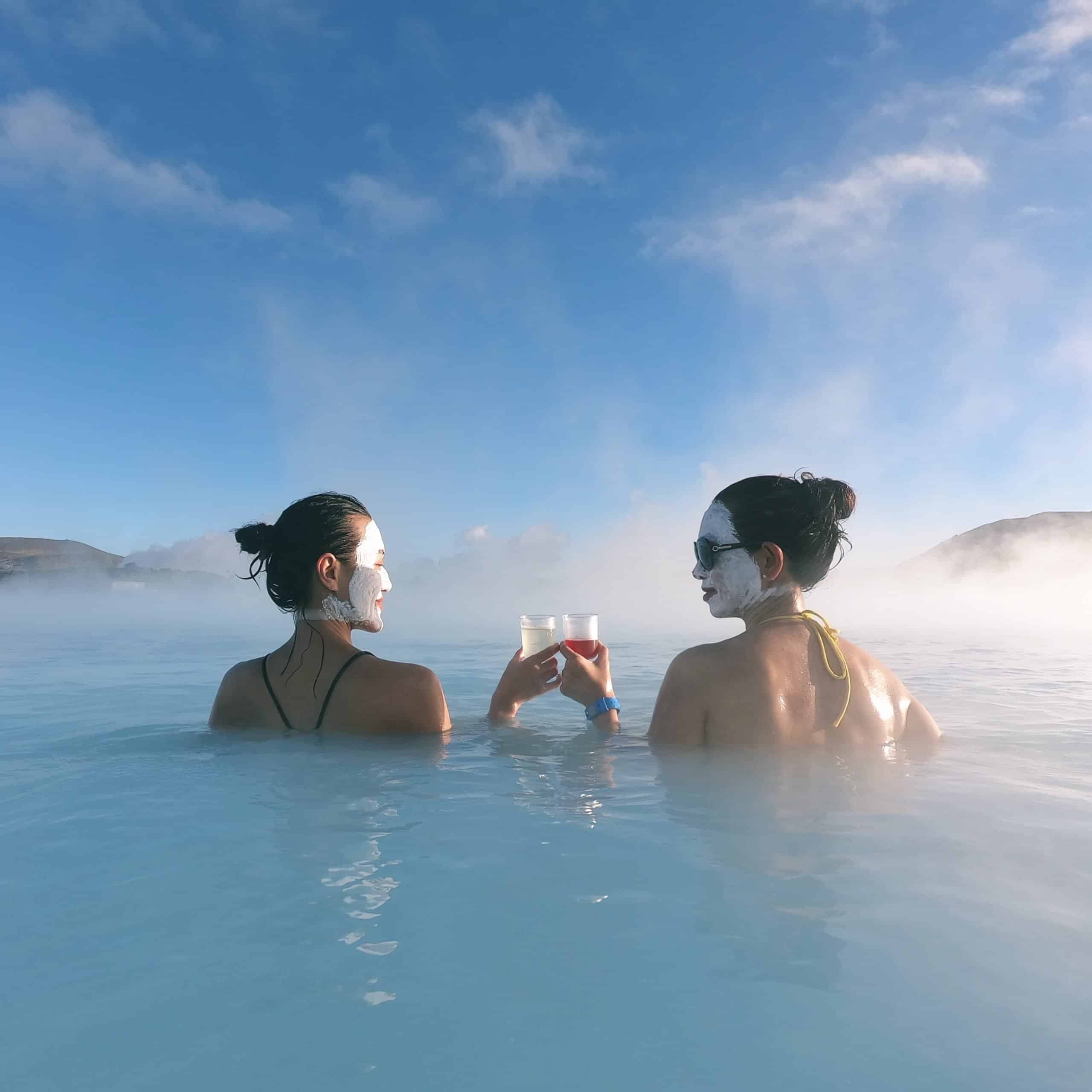
On your first day in Iceland, stop at the Blue Lagoon for a relaxing soak. This luxurious spa is located midway between Keflavík Airport and Iceland’s capital city, Reykjavík, so you can relax in geothermal waters a few moments after you land. Can you think of a better way to get rid of a jet-lag?
Snæfellsnes Peninsula
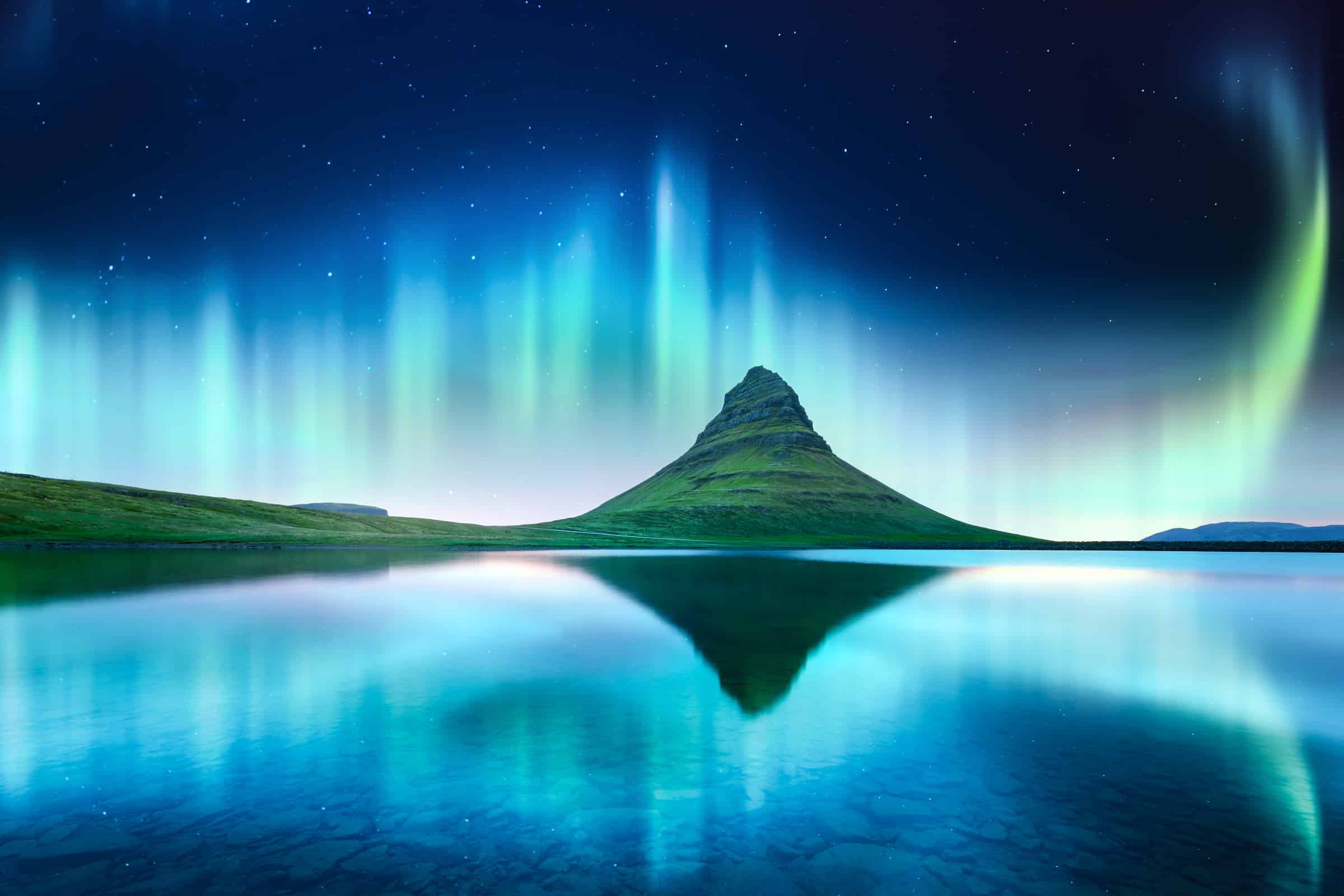
On your second day in Iceland, explore the diverse wonders of the Snæfellsnes Peninsula. This short stretch of land in West Iceland is filled with beautiful waterfalls, majestic mountains, and black-pebble beaches. Looking over the area is the mighty Snæfellsjökull Glacier, said to have mystical powers.
West Iceland
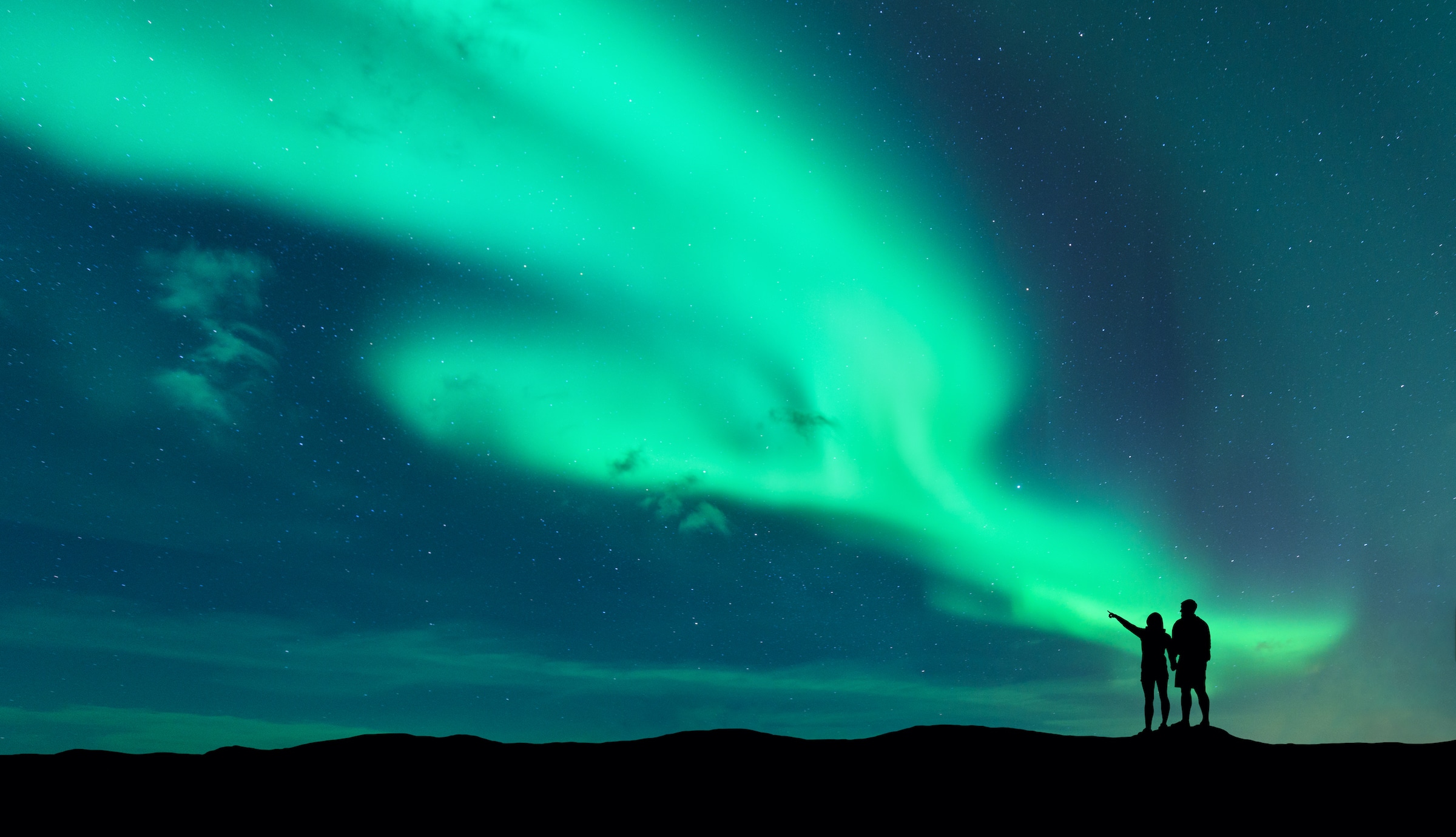
Viking history and natural wonders characterize your third day as you explore the attractions in West Iceland. Here, you’ll find stunning waterfalls, Europe’s largest hot spring, and historical farmhouses that influenced the Icelandic Sagas. This is also a good area to go searching for the Northern Lights in the evening.
Golden Circle
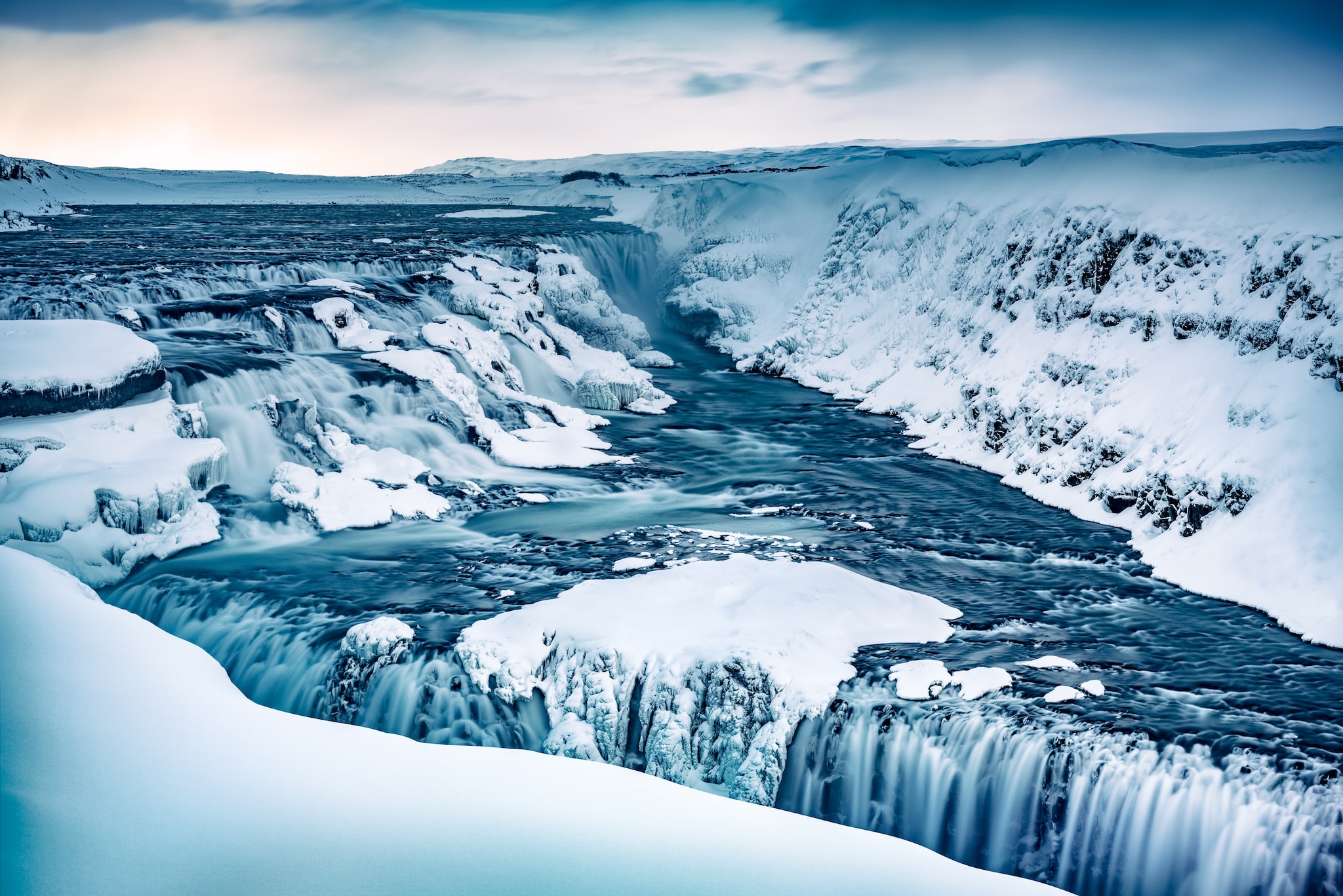
Iceland’s most popular sightseeing route, the Golden Circle, is less popular than normal in February. Although you might spot a few people around, there will undoubtedly be fewer crowds around Þingvellir National Park, Geysir Geothermal Area, and Gullfoss Waterfall than during the warmer months. Use the opportunity to snap some amazing photos of these natural wonders without people in the background.
South Coast
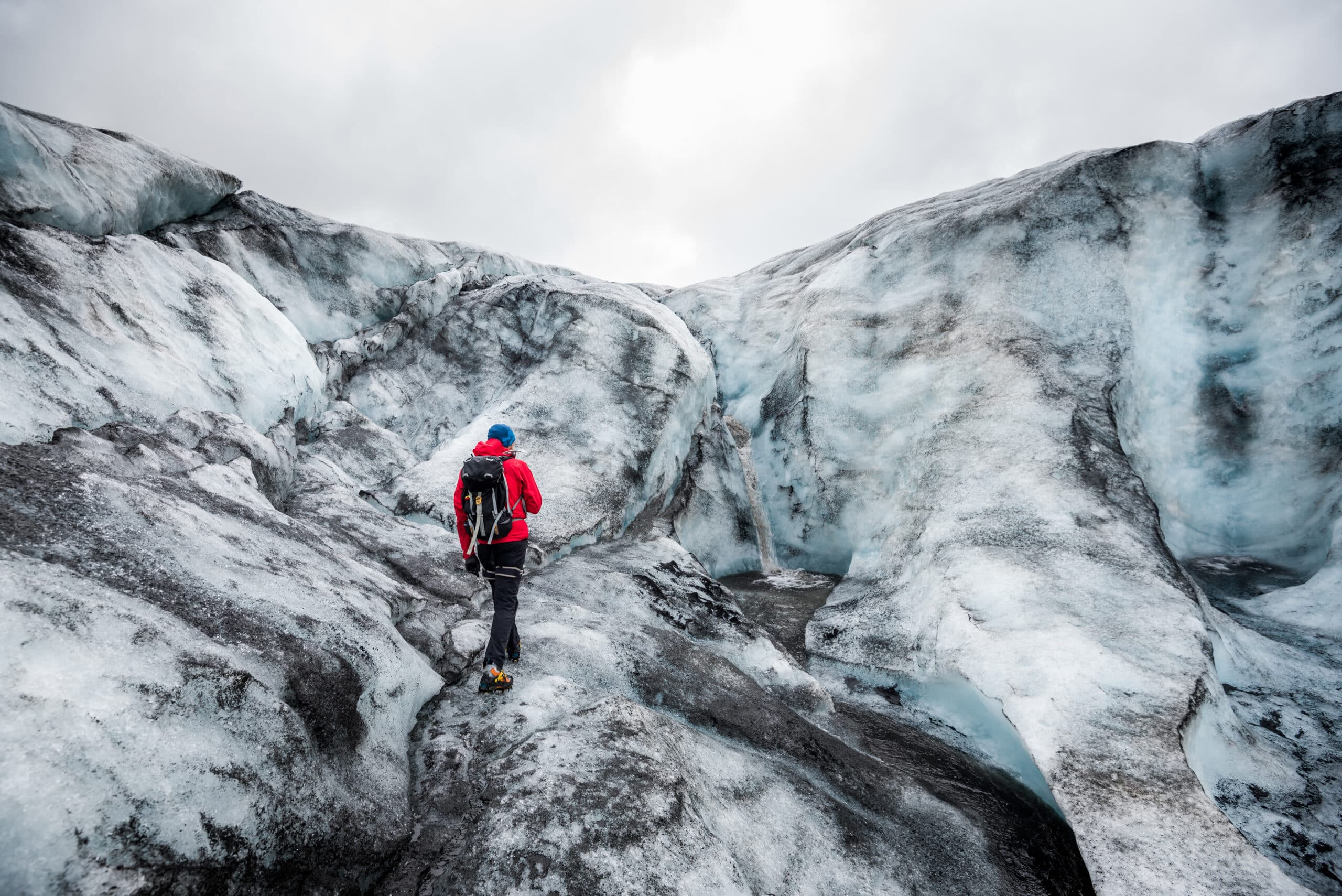
Iceland’s south coast is known for its powerful waterfalls, majestic glaciers, and black sand beaches. Aside from exploring these beautiful natural wonders, this day is also great for activities like glacier hiking, ice caving, snowmobiling, or riding the Icelandic Horse.
Reykjavik
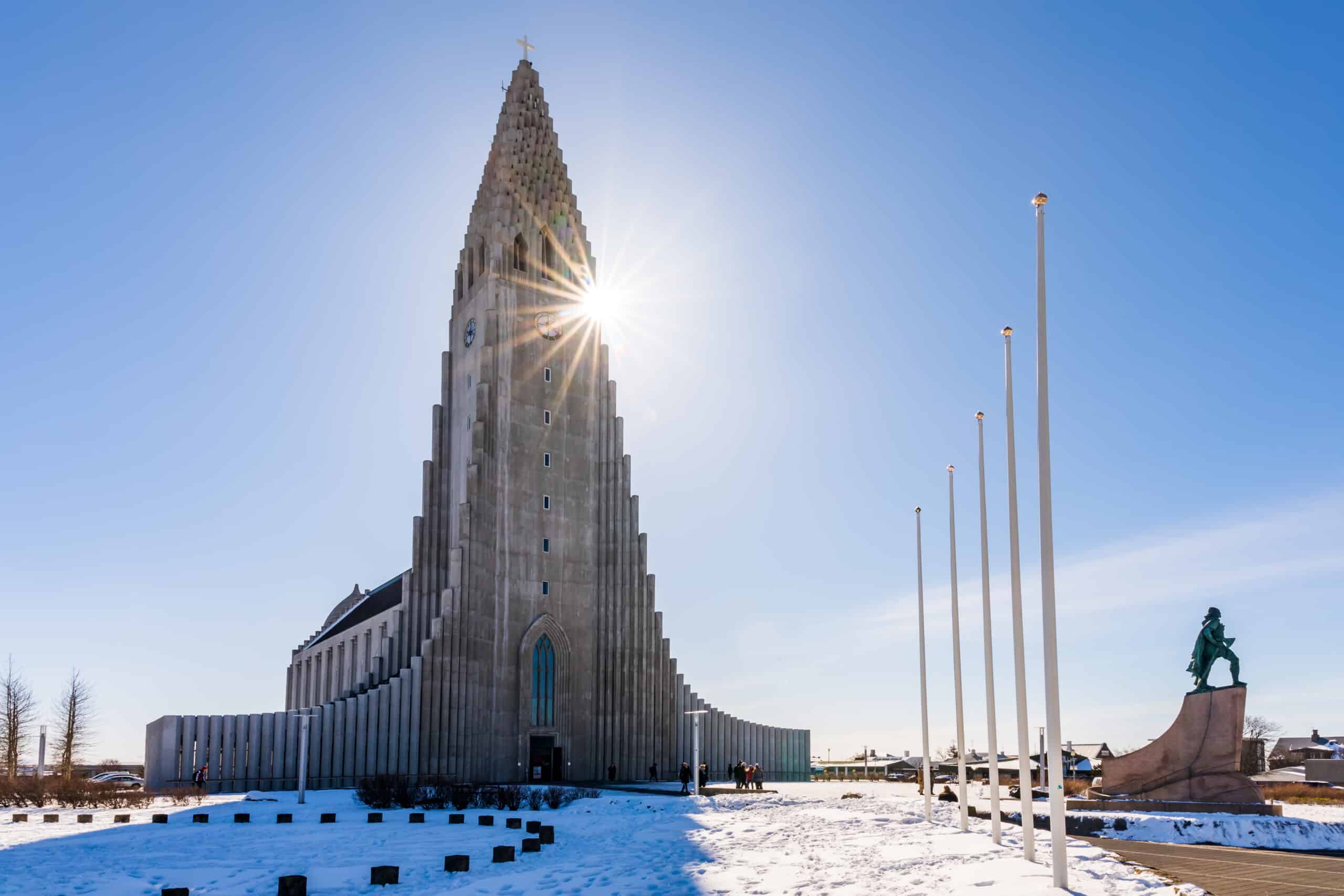
Iceland’s capital city, Reykjavík, is a fantastic place to explore in February. It’s filled with great indoor activities in case the weather is acting up, like museums, indoor swimming pools, and movie theatres. And let’s not forget the endless cafes and bars in case you want to warm up with a cup of hot chocolate…or something stronger.
Sky Lagoon
Before heading back to the airport on your last day in Iceland, stop by the town of Kópavogur. Here, you’ll find the fantastic Sky Lagoon, a geothermal spa that offers an amazing view from its infinity pool. After you’ve enjoyed the warm waters and hot sauna, you are sure to be completely relaxed for your flight back home.
Iceland in February – Summary
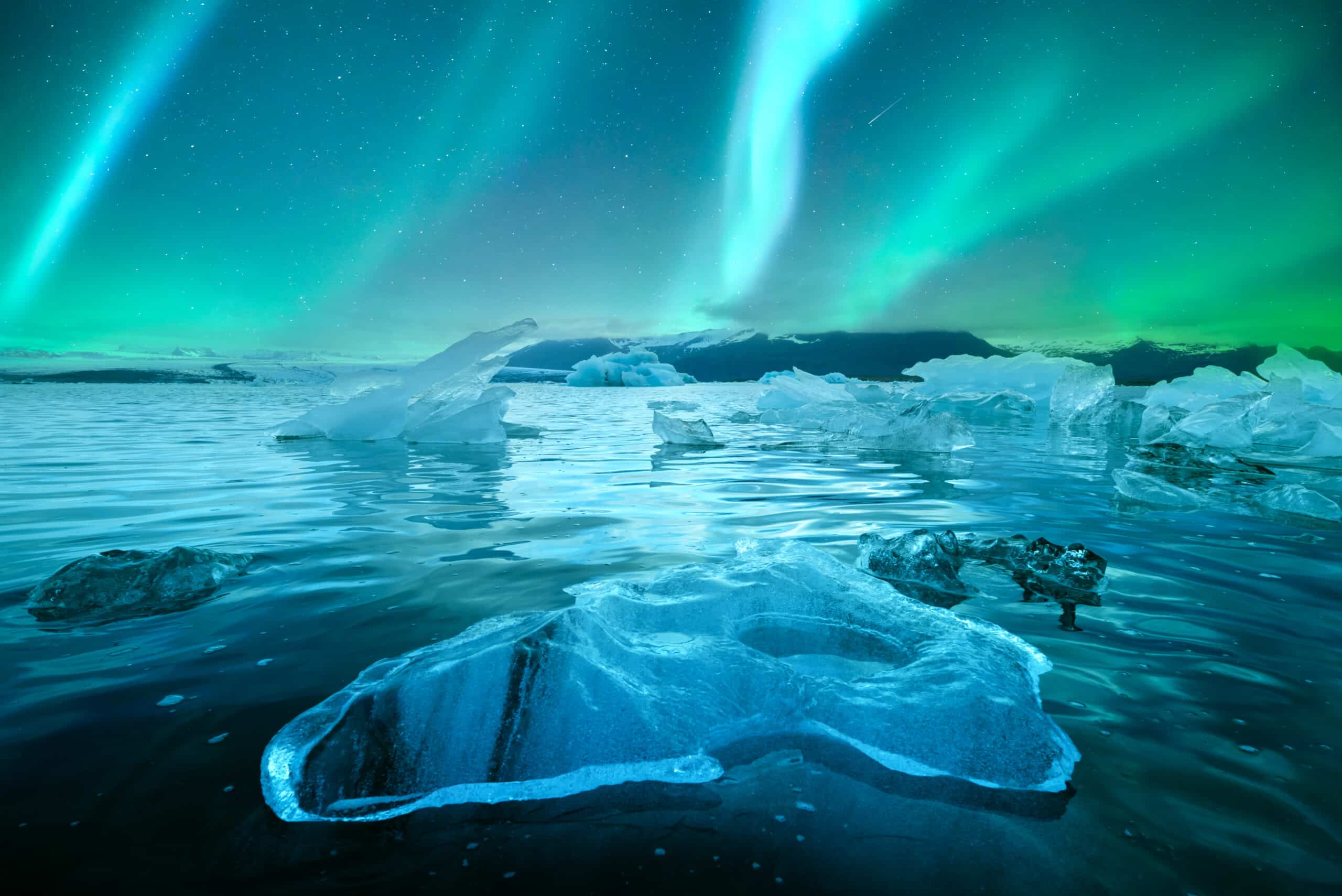
February is not the most popular time to visit Iceland, but that only means fewer crowds and lower prices on accommodation than during peak season.
Visiting during this time is a gamble, as you can experience stunning scenery and amazing natural landscapes. But you could also run into some bad luck with the weather. Cold temperatures and high wind speeds are likely. If you pair that with the few daylight hours Iceland has in February, it might not seem like such an ideal time to visit.
Though it might not be a popular time to visit, there are endless activities and sights to see in Iceland. The best things to do in Iceland in February are:
- Searching for the Northern Lights at night.
- Visit popular Ice Caves.
- Enjoy artificial light displays and geothermal pools at the Winter Lights Festival.
- Head inside to explore museums when it’s too cold.
- Photograph the moody weather.
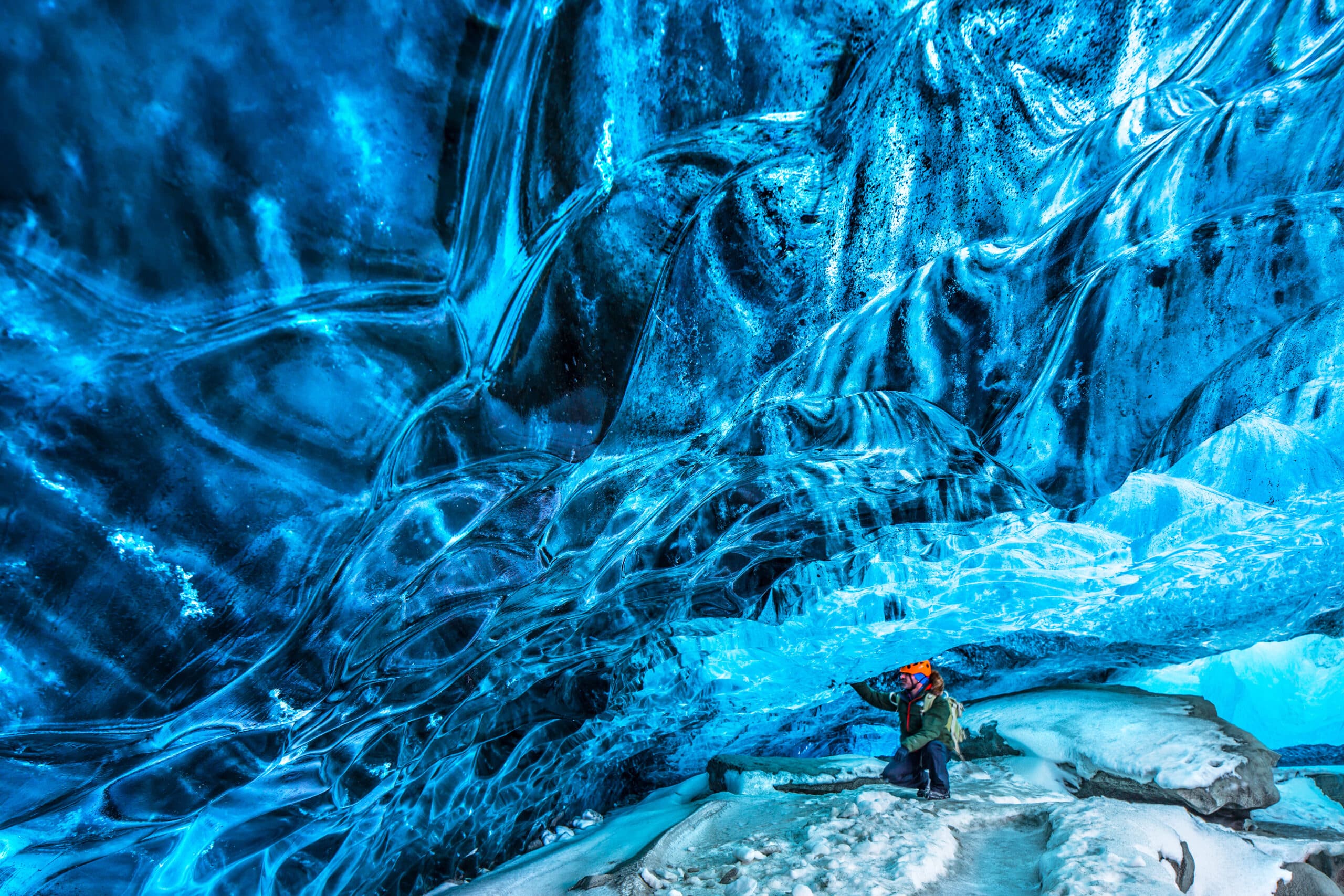
Allocate at least five days for a trip around western and southern Iceland, but at least ten if you want to add North and East Iceland to your trip. We recommend guided tours when exploring Iceland, either small-group tours or privately guided. If you are confident driving in the winter, a self-drive tour is also an option. Just remember to check the weather forecast and road conditions.
Those willing to gamble on Iceland in February should have a sense of adventure and be flexible. That is the key to having an amazing winter vacation in Iceland.

